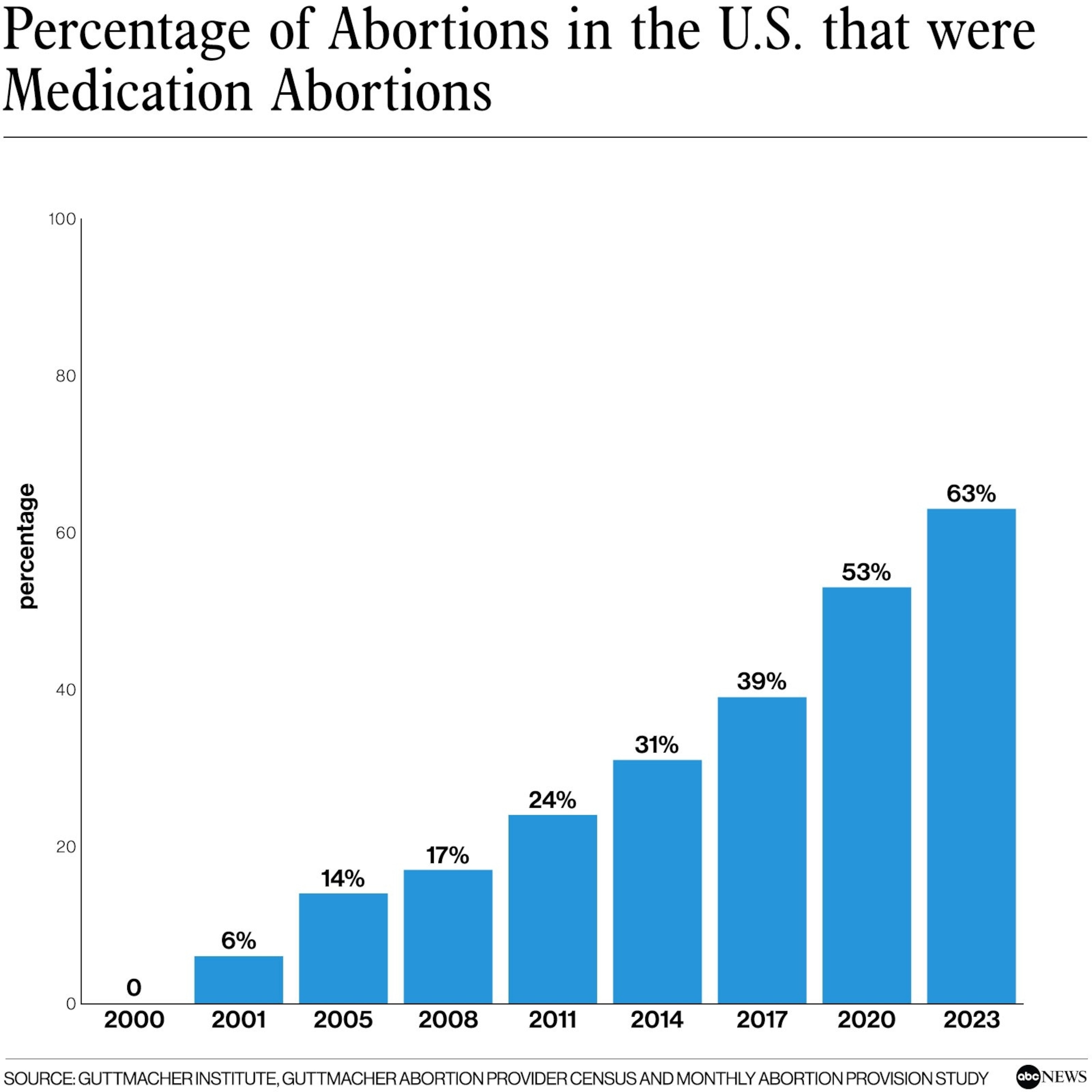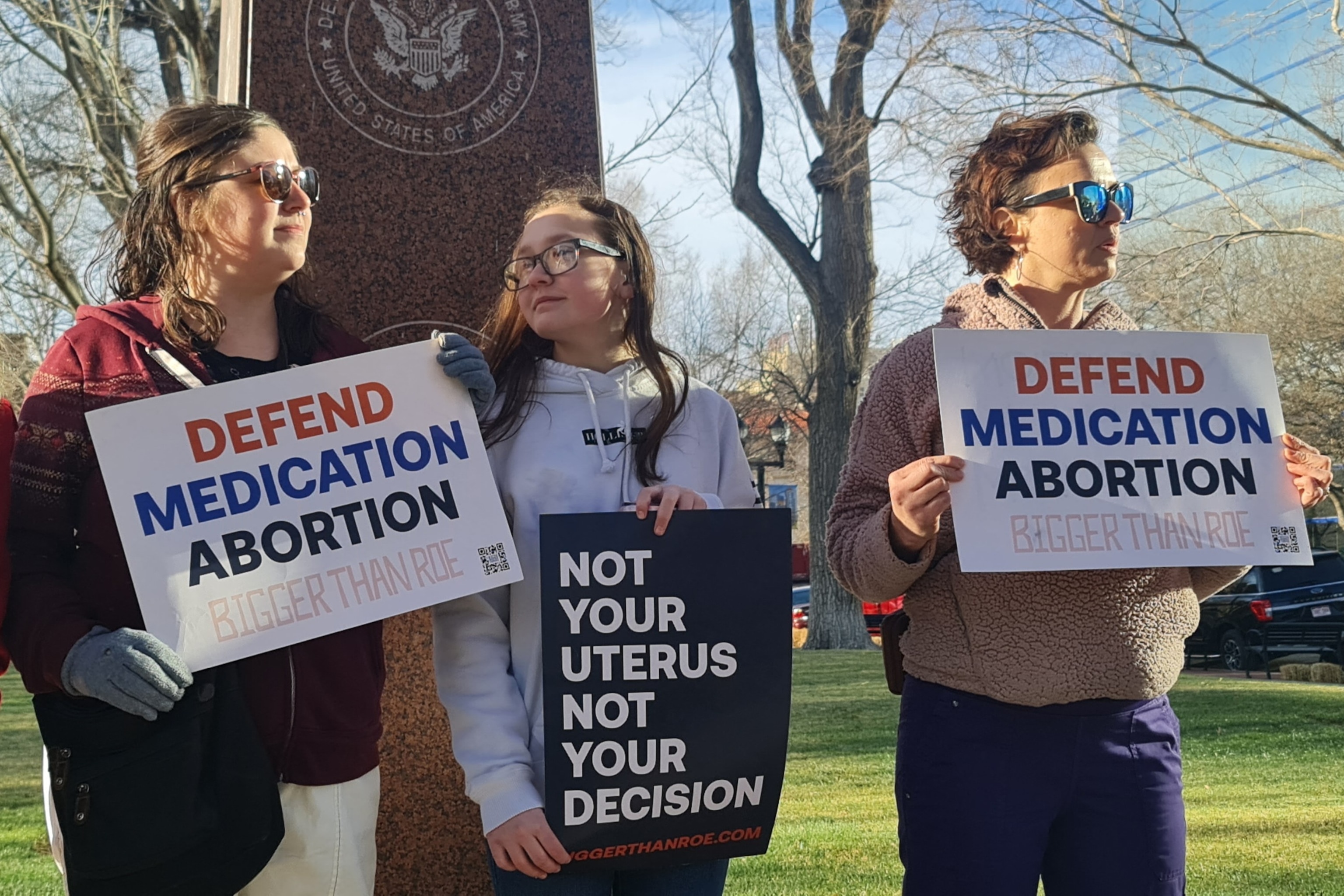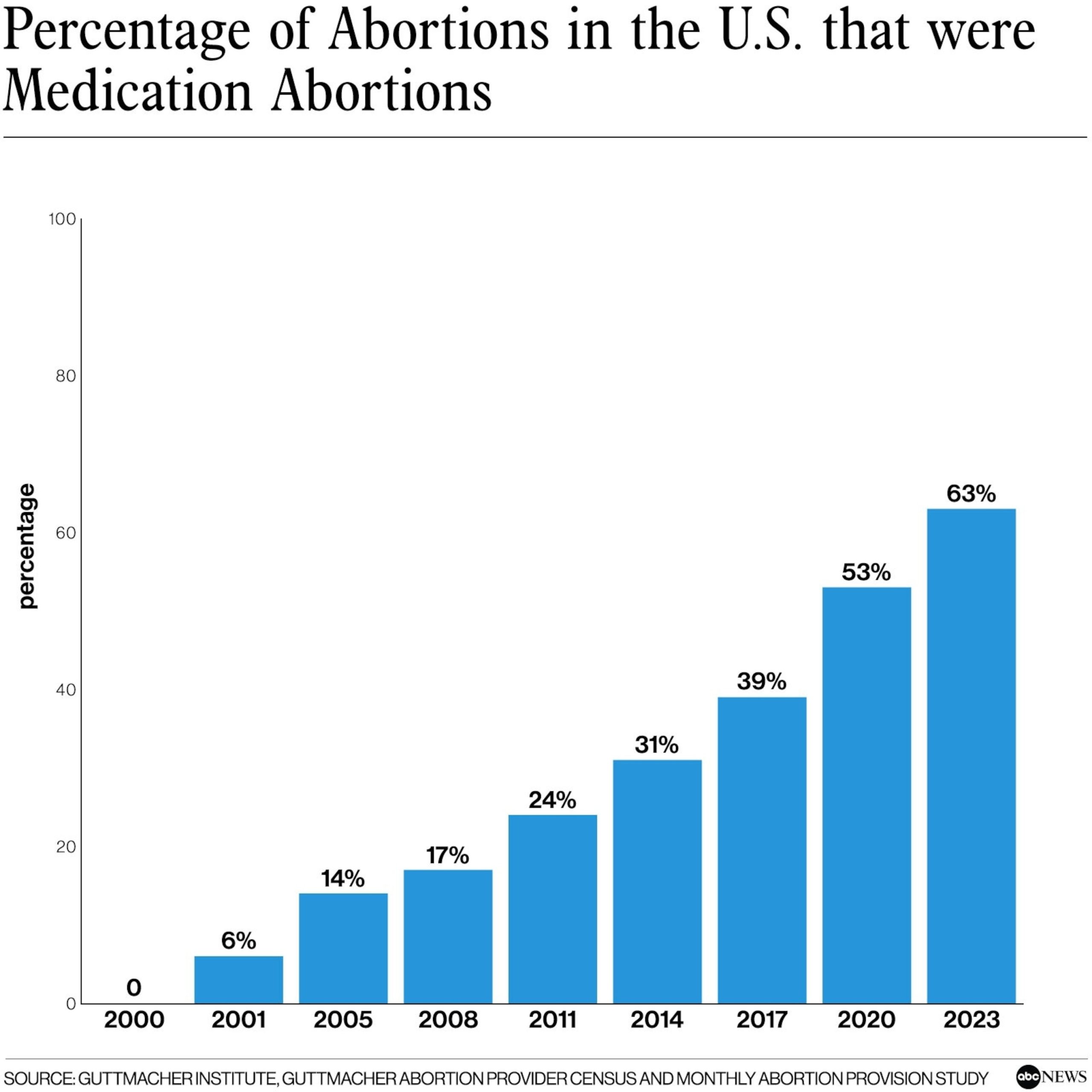Medication abortion accounted for 63% of all the abortions performed in the U.S. in 2023, according to a new study from the Guttmacher Institute.
In the first full calendar year following the U.S. Supreme Court’s overturning of Roe v. Wade in July 2022, approximately 642,700 medication abortions took place within the health care system, according to Guttmacher’s Monthly Provision Study. Since the court’s decision, 14 states have ceased nearly all abortions.
By comparison, medication abortions accounted for 53% of abortions in the U.S. in 2020, according to the study.
One of the pills used in the medication abortion regimen, mifepristone, is at the center of a legal challenge before the Supreme Court which could restrict nationwide access to the pill.
The utilization of medication abortions has steadily increased over the last two decades.

Percentage of abortions in the U.S. that were medication abortions
Source: Guttmacher Institute
The most common medication abortion regimen consists of two medications, mifepristone and misoprotol. Under current Food and Drug Administration guidelines, mifepristone is safe for use up to 10 weeks of pregnancy and can be sent to patients following a telehealth appointment.
The Guttmacher Institute estimates that the total number of medication abortions is higher than the study’s count, because the study only includes abortions provided within the formal health care system.
The study does not take into account self-managed abortions which take place outside the formal health care system or abortion medication mailed to patients living in states with abortion bans in effect, according to the Guttmacher Institute.
The study also found that, in 2023, there were an estimated 1,026,690 abortions in the formal U.S. health care system and a rate of 15.7 abortions per 1,000 women of reproductive age. This represents a 10% increase in the number of abortions from 2020 and is the highest number and rate of abortions measured in the country in more than a decade. It’s the first year since 2012 that there were more than one million abortions provided in the formal health care system.

People protest in response to the Dobbs v. Jackson Women’s Health Organization ruling in front of the U.S. Supreme Court in Washington, D.C., June 24, 2022.
Brandon Bell/Getty Images

Abortion rights advocates gather in Amarillo, TX, on March 15, 2023.
Moises Avila/AFP via Getty Images
The U.S. Supreme Court is set to weigh in on abortion once again when it hears arguments in a lawsuit seeking to revoke the FDA’s approval of mifepristone. The court could restrict the ability to mail abortion medication to patients living in states with bans in effect and require that the drug be provided in-person.
Earlier this month, CVS and Walgreens announced that they would begin selling mifepristone in some states.
A recent study conducted by the Guttmacher Institute has found that medication abortion made up a significant portion of abortions in the United States in 2023, accounting for 63% of all procedures. This marks a significant increase from previous years, highlighting the growing popularity and accessibility of this method of abortion.
Medication abortion, also known as the abortion pill, involves taking two different medications to terminate a pregnancy. The first medication, mifepristone, is taken at a healthcare provider’s office, while the second medication, misoprostol, is taken at home 24 to 48 hours later. This method is typically used within the first 10 weeks of pregnancy and is considered safe and effective.
The rise in medication abortion can be attributed to several factors. One of the main reasons is the increasing availability of telemedicine services, which allow individuals to consult with healthcare providers remotely and receive prescriptions for medication abortion without having to visit a clinic in person. This has made it easier for individuals in rural or underserved areas to access abortion care.
Additionally, the COVID-19 pandemic has also played a role in the increased use of medication abortion. With restrictions on in-person healthcare services and concerns about exposure to the virus, many individuals have turned to medication abortion as a safer and more convenient option.
Despite its growing popularity, medication abortion continues to face barriers in some states. Several states have passed laws restricting access to medication abortion, such as requiring in-person visits for both medications or mandating that healthcare providers follow outdated protocols. These restrictions can make it more difficult for individuals to access this safe and effective method of abortion.
Overall, the findings of this study highlight the importance of ensuring access to medication abortion for individuals seeking to terminate a pregnancy. As this method continues to grow in popularity, it is essential that policies and regulations support and expand access to this important healthcare option.



